1. Akakpo PK, Awuku YA, Derkyi-Kwarteng L, Gyamera KA, Eliason S. Review of errors in the issue of medical certificates of cause of death in a tertiary hospital in Ghana. Ghana Med J. 2017; 51(1):30–35. PMID:
28959070.
2. Alipour J, Payandeh A. Common errors in reporting cause-of-death statement on death certificates: a systematic review and meta-analysis. J Forensic Leg Med. 2021; 82:102220. PMID:
34325081.
3. Ben Khelil M, Kamel M, Lahmar S, Mrabet A, Borsali Falfoul N, Hamdoun M. Death certificate accuracy in a Tunisian emergency department. Tunis Med. 2017; 95(6):422–428. PMID:
29512798.
4. Burger EH, van der Merwe L, Volmink J. Errors in the completion of the death notification form. S Afr Med J. 2007; 97(11):1077–1081. PMID:
18250917.
5. Chang JH, Kim SH, Lee H, Choi B. Analysis of errors on death certificate for trauma related death. J Trauma Inj. 2019; 32(3):127–135.
6. Chung S, Kim SH, Park BJ, Park S. Factors associated with major errors on death certificates. Healthcare (Basel). 2022; 10(4):726. PMID:
35455903.
7. Fernando D, Oxley JD, Nottingham J. Death certification: do consultant pathologists do it better? J Clin Pathol. 2012; 65(10):949–951. PMID:
22774219.
8. Filippatos G, Andriopoulos P, Panoutsopoulos G, Zyga S, Souliotis K, Gennimata V, et al. The quality of death certification practice in Greece. Hippokratia. 2016; 20(1):19–25. PMID:
27895438.
9. Katsakiori PF, Panagiotopoulou EC, Sakellaropoulos GC, Papazafiropoulou A, Kardara M. Errors in death certificates in a rural area of Greece. Rural Remote Health. 2007; 7(4):822. PMID:
18067402.
10. Lee H, Kim SH, Choi B, Ock M, Park EJ. Concordance between the underlying causes of death on death certificates written by three emergency physicians. Clin Exp Emerg Med. 2019; 6(3):218–225. PMID:
31571438.
11. Lu TH, Shau WY, Shih TP, Lee MC, Chou MC, Lin CK. Factors associated with errors in death certificate completion. A national study in Taiwan. J Clin Epidemiol. 2001; 54(3):232–238. PMID:
11223320.
12. Maharjan L, Shah A, Shrestha KB, Shrestha G. Errors in cause-of-death statement on death certificates in intensive care unit of Kathmandu, Nepal. BMC Health Serv Res. 2015; 15(1):507. PMID:
26563325.
13. McGivern L, Shulman L, Carney JK, Shapiro S, Bundock E. Death certification errors and the effect on mortality statistics. Public Health Rep. 2017; 132(6):669–675. PMID:
29091542.
14. Myers KA, Farquhar DR. Improving the accuracy of death certification. CMAJ. 1998; 158(10):1317–1323. PMID:
9614825.
15. Park BJ, Kim SH. Errors in pediatric death certificates issued in an emergency department. Pediatr Emerg Med J. 2022; 9(1):17–22.
16. Park CH, Kim SH. Errors of death certificate for poisoning related death. J Korean Soc Clin Toxicol. 2020; 18(1):11–17.
17. Park S, Kim SH. Does the application of international classification of disease codes for the cause of death on death certificates reduce garbage codes? Inquiry. 2022; 59:469580221081433. PMID:
35384751.
18. Schuppener LM, Olson K, Brooks EG. Death certification: errors and interventions. Clin Med Res. 2020; 18(1):21–26. PMID:
31597655.
19. Kim HG, Park JW, Cho WY, Seo JH, Choi CH, Na JY. The discrepancy of the cause and manner of death between death certificates and autopsy reports. Korean J Leg Med. 2014; 38(4):139–144.
20. Yoon SH, Kim R, Lee CS. Analysis of death certificate errors of a university hospital emergency room. Korean J Leg Med. 2017; 41(3):61–66.
21. Lakkireddy DR, Gowda MS, Murray CW, Basarakodu KR, Vacek JL. Death certificate completion: how well are physicians trained and are cardiovascular causes overstated? Am J Med. 2004; 117(7):492–498. PMID:
15464706.
22. Kang E, Lee H, Kim SH. The effect of education on ‘how to write the death certificate’ for resident trainees of the emergency department. J Korean Soc Emerg Med. 2018; 29(5):529–550.
23. Mikkelsen L, Richards N, Lopez A. Redefining ‘Garbage Codes’ for Public Health Policy: Report on the Expert Group Meeting, 27-28 February 2017. Melbourne, Australia: University of Melbourne;2018.
24. Yoo S. Determination of cause and manner of death. J Korean Med Assoc. 2018; 1975(8456):2093–5951.
25. Korean Medical Association. How to Write and Issue Medical Certificates. Seoul, Korea: Korean Medical Association;2015. p. 34–53.
26. Brämer GR. International statistical classification of diseases and related health problems. Tenth revision. World Health Stat Q. 1988; 41(1):32–36. PMID:
3376487.
27. Hanzlick R. Cause of Death and the Death Certificate: Important Information for Physicians, Coroners, Medical Examiners, and The Public. Northfield, IL, USA: College of American Pathologists;2006.
29. Pandya H, Bose N, Shah R, Chaudhury N, Phatak A. Educational intervention to improve death certification at a teaching hospital. Natl Med J India. 2009; 22(6):317–319. PMID:
20384023.
30. Rogena EA, Waruru A, Young PW, Abade P, Nyagah LM, Walong EO. A review of completeness, correctness, and order of cause of death statements among decedents with documented causes of death and HIV status at two major mortuaries in Kenya, 2015. J Forensic Leg Med. 2020; 73:101993. PMID:
32658751.
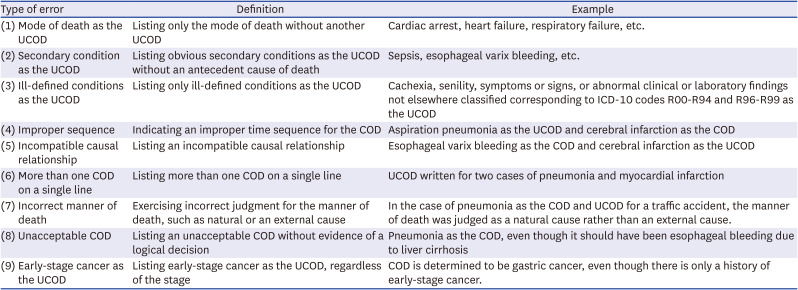
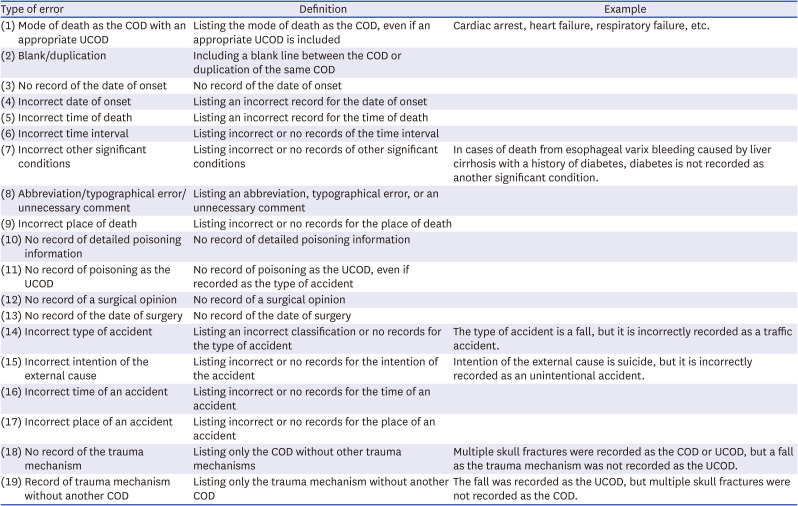
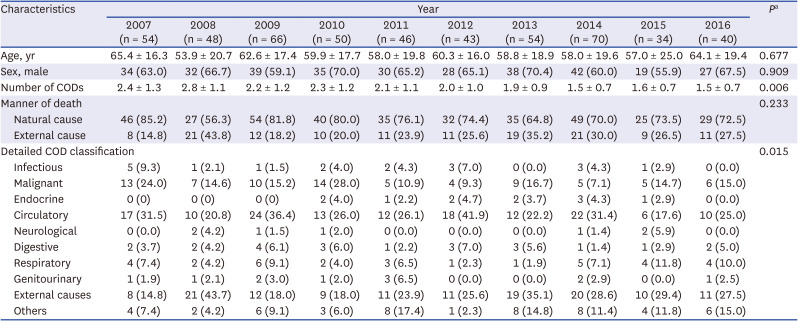
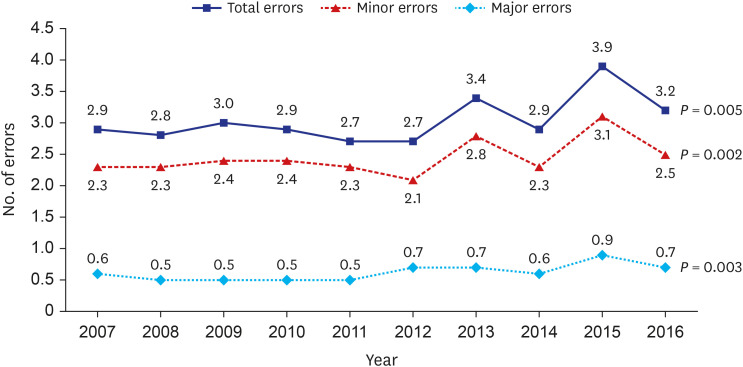
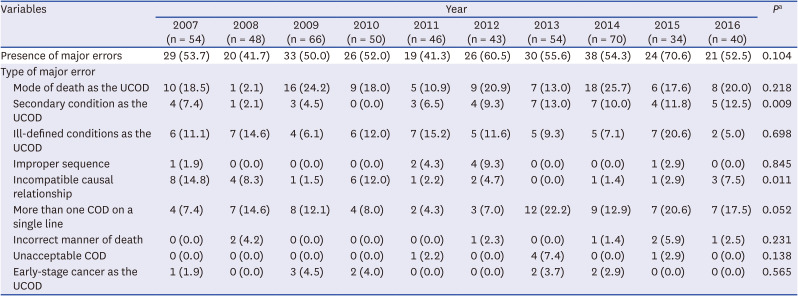
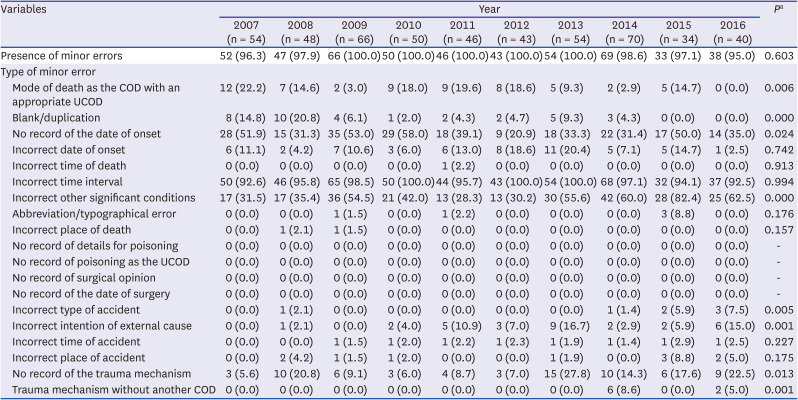
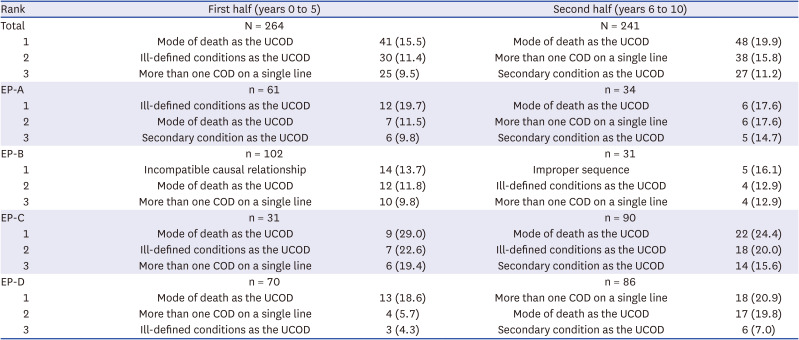




 PDF
PDF Citation
Citation Print
Print



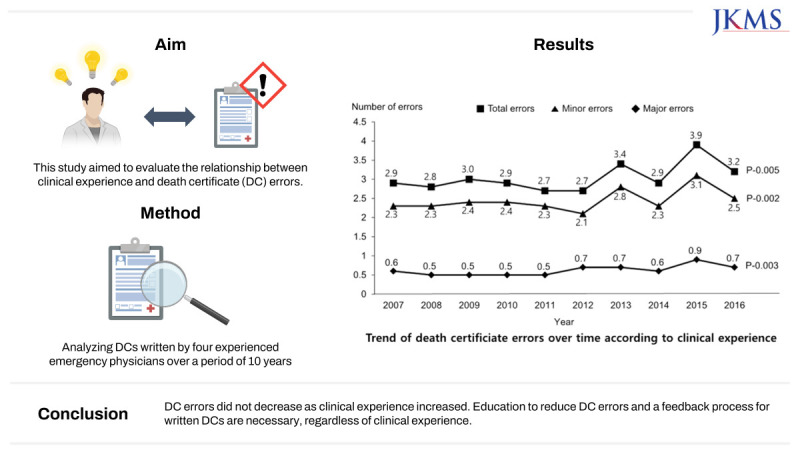
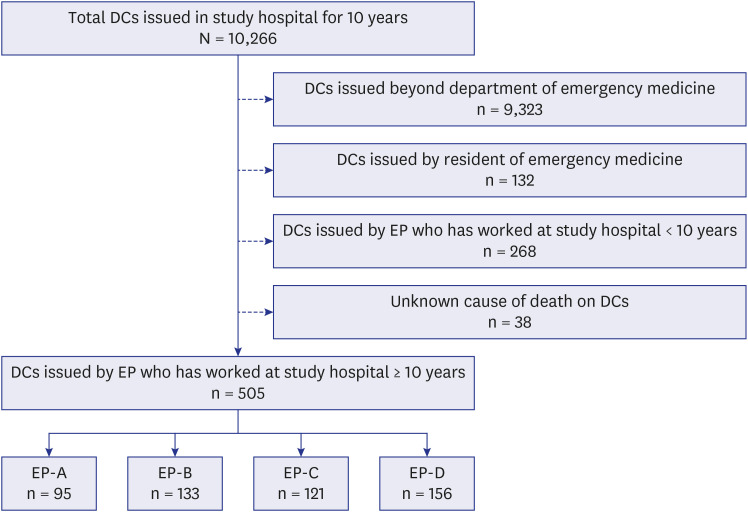
 XML Download
XML Download